Saeed Khorram
Taming the Tail in Class-Conditional GANs: Knowledge Sharing via Unconditional Training at Lower Resolutions
Feb 26, 2024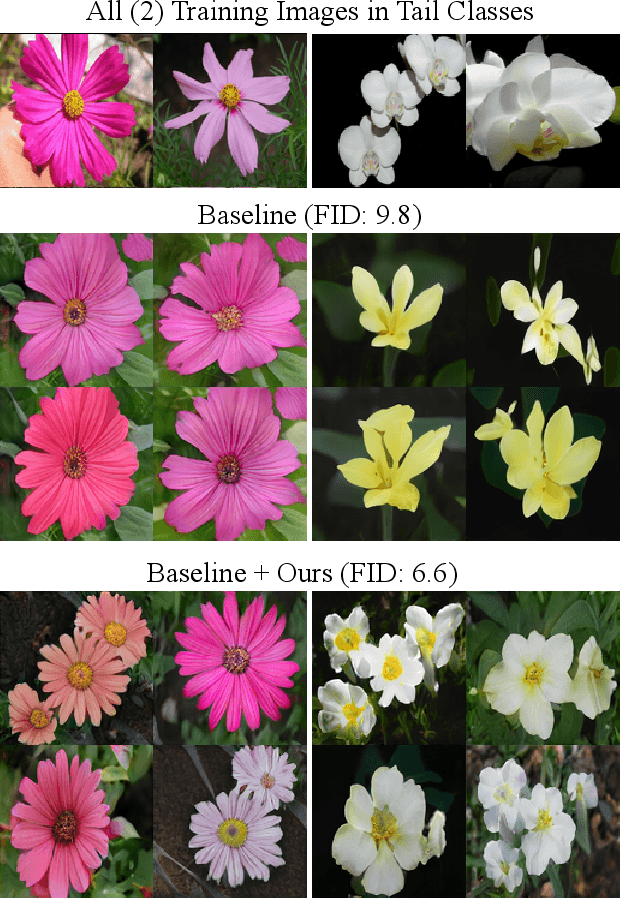

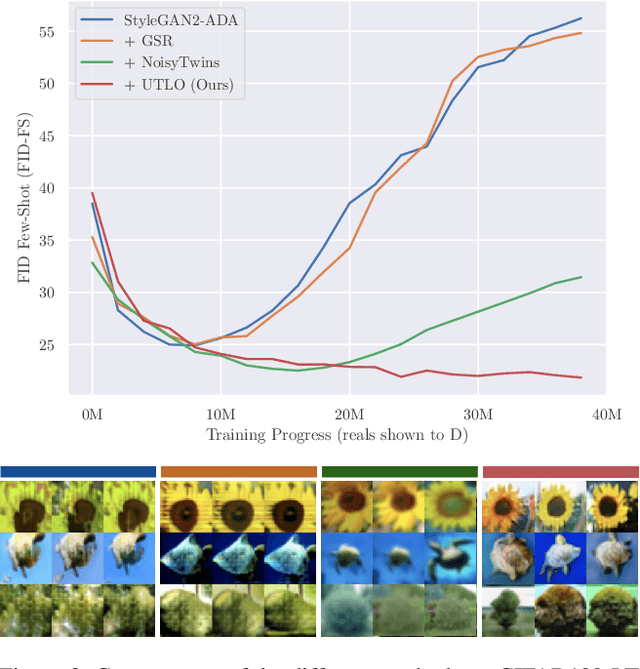

Abstract:Despite the extensive research on training generative adversarial networks (GANs) with limited training data, learning to generate images from long-tailed training distributions remains fairly unexplored. In the presence of imbalanced multi-class training data, GANs tend to favor classes with more samples, leading to the generation of low-quality and less diverse samples in tail classes. In this study, we aim to improve the training of class-conditional GANs with long-tailed data. We propose a straightforward yet effective method for knowledge sharing, allowing tail classes to borrow from the rich information from classes with more abundant training data. More concretely, we propose modifications to existing class-conditional GAN architectures to ensure that the lower-resolution layers of the generator are trained entirely unconditionally while reserving class-conditional generation for the higher-resolution layers. Experiments on several long-tail benchmarks and GAN architectures demonstrate a significant improvement over existing methods in both the diversity and fidelity of the generated images. The code is available at https://github.com/khorrams/utlo.
Examining the Difference Among Transformers and CNNs with Explanation Methods
Dec 15, 2022Abstract:We propose a methodology that systematically applies deep explanation algorithms on a dataset-wide basis, to compare different types of visual recognition backbones, such as convolutional networks (CNNs), global attention networks, and local attention networks. Examination of both qualitative visualizations and quantitative statistics across the dataset helps us to gain intuitions that are not just anecdotal, but are supported by the statistics computed on the entire dataset. Specifically, we propose two methods. The first one, sub-explanation counting, systematically searches for minimally-sufficient explanations of all images and count the amount of sub-explanations for each network. The second one, called cross-testing, computes salient regions using one network and then evaluates the performance by only showing these regions as an image to other networks. Through a combination of qualitative insights and quantitative statistics, we illustrate that 1) there are significant differences between the salient features of CNNs and attention models; 2) the occlusion-robustness in local attention models and global attention models may come from different decision-making mechanisms.
Cycle-Consistent Counterfactuals by Latent Transformations
Mar 28, 2022



Abstract:CounterFactual (CF) visual explanations try to find images similar to the query image that change the decision of a vision system to a specified outcome. Existing methods either require inference-time optimization or joint training with a generative adversarial model which makes them time-consuming and difficult to use in practice. We propose a novel approach, Cycle-Consistent Counterfactuals by Latent Transformations (C3LT), which learns a latent transformation that automatically generates visual CFs by steering in the latent space of generative models. Our method uses cycle consistency between the query and CF latent representations which helps our training to find better solutions. C3LT can be easily plugged into any state-of-the-art pretrained generative network. This enables our method to generate high-quality and interpretable CF images at high resolution such as those in ImageNet. In addition to several established metrics for evaluating CF explanations, we introduce a novel metric tailored to assess the quality of the generated CF examples and validate the effectiveness of our method on an extensive set of experiments.
From Heatmaps to Structural Explanations of Image Classifiers
Sep 13, 2021
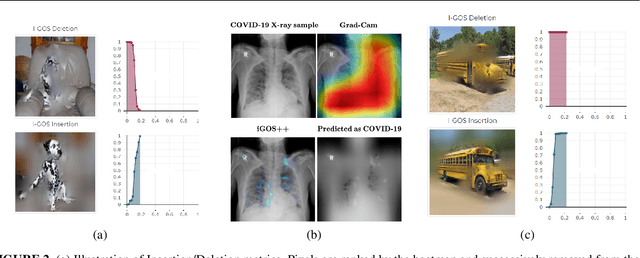

Abstract:This paper summarizes our endeavors in the past few years in terms of explaining image classifiers, with the aim of including negative results and insights we have gained. The paper starts with describing the explainable neural network (XNN), which attempts to extract and visualize several high-level concepts purely from the deep network, without relying on human linguistic concepts. This helps users understand network classifications that are less intuitive and substantially improves user performance on a difficult fine-grained classification task of discriminating among different species of seagulls. Realizing that an important missing piece is a reliable heatmap visualization tool, we have developed I-GOS and iGOS++ utilizing integrated gradients to avoid local optima in heatmap generation, which improved the performance across all resolutions. During the development of those visualizations, we realized that for a significant number of images, the classifier has multiple different paths to reach a confident prediction. This has lead to our recent development of structured attention graphs (SAGs), an approach that utilizes beam search to locate multiple coarse heatmaps for a single image, and compactly visualizes a set of heatmaps by capturing how different combinations of image regions impact the confidence of a classifier. Through the research process, we have learned much about insights in building deep network explanations, the existence and frequency of multiple explanations, and various tricks of the trade that make explanations work. In this paper, we attempt to share those insights and opinions with the readers with the hope that some of them will be informative for future researchers on explainable deep learning.
Stochastic Block-ADMM for Training Deep Networks
May 01, 2021


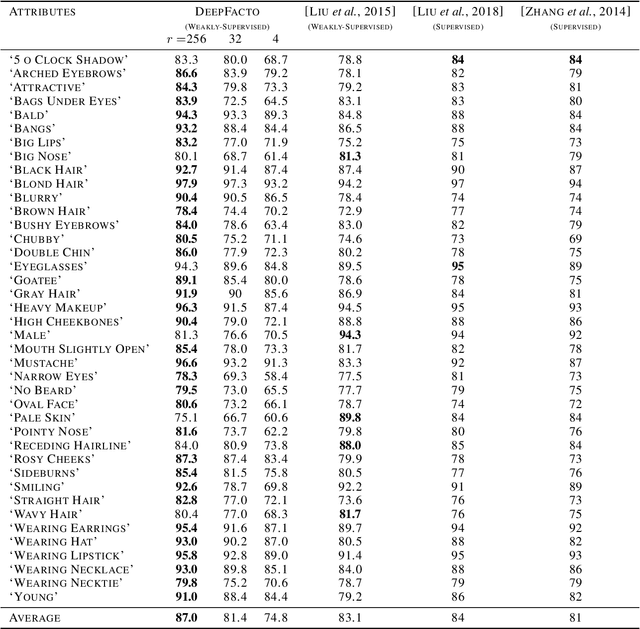
Abstract:In this paper, we propose Stochastic Block-ADMM as an approach to train deep neural networks in batch and online settings. Our method works by splitting neural networks into an arbitrary number of blocks and utilizes auxiliary variables to connect these blocks while optimizing with stochastic gradient descent. This allows training deep networks with non-differentiable constraints where conventional backpropagation is not applicable. An application of this is supervised feature disentangling, where our proposed DeepFacto inserts a non-negative matrix factorization (NMF) layer into the network. Since backpropagation only needs to be performed within each block, our approach alleviates vanishing gradients and provides potentials for parallelization. We prove the convergence of our proposed method and justify its capabilities through experiments in supervised and weakly-supervised settings.
iGOS++: Integrated Gradient Optimized Saliency by Bilateral Perturbations
Dec 31, 2020

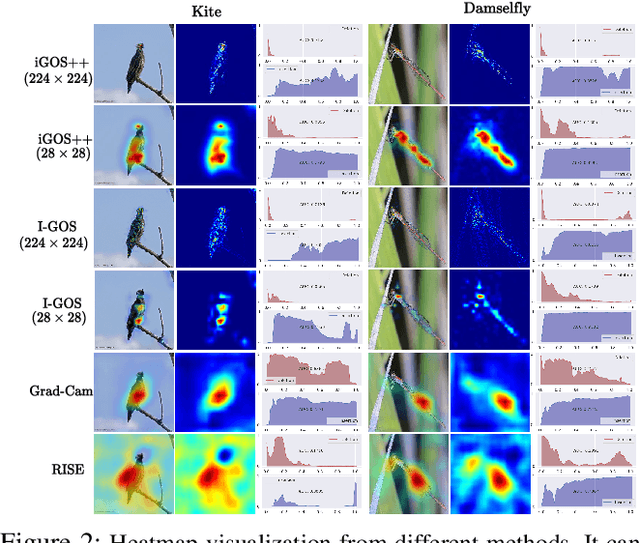

Abstract:The black-box nature of the deep networks makes the explanation for "why" they make certain predictions extremely challenging. Saliency maps are one of the most widely-used local explanation tools to alleviate this problem. One of the primary approaches for generating saliency maps is by optimizing a mask over the input dimensions so that the output of the network is influenced the most by the masking. However, prior work only studies such influence by removing evidence from the input. In this paper, we present iGOS++, a framework to generate saliency maps that are optimized for altering the output of the black-box system by either removing or preserving only a small fraction of the input. Additionally, we propose to add a bilateral total variation term to the optimization that improves the continuity of the saliency map especially under high resolution and with thin object parts. The evaluation results from comparing iGOS++ against state-of-the-art saliency map methods show significant improvement in locating salient regions that are directly interpretable by humans. We utilized iGOS++ in the task of classifying COVID-19 cases from x-ray images and discovered that sometimes the CNN network is overfitted to the characters printed on the x-ray images when performing classification. Fixing this issue by data cleansing significantly improved the precision and recall of the classifier.
Understanding Finite-State Representations of Recurrent Policy Networks
Jun 06, 2020
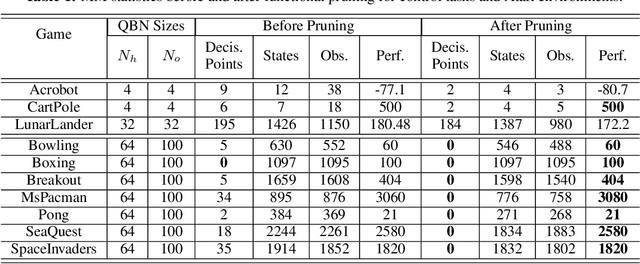
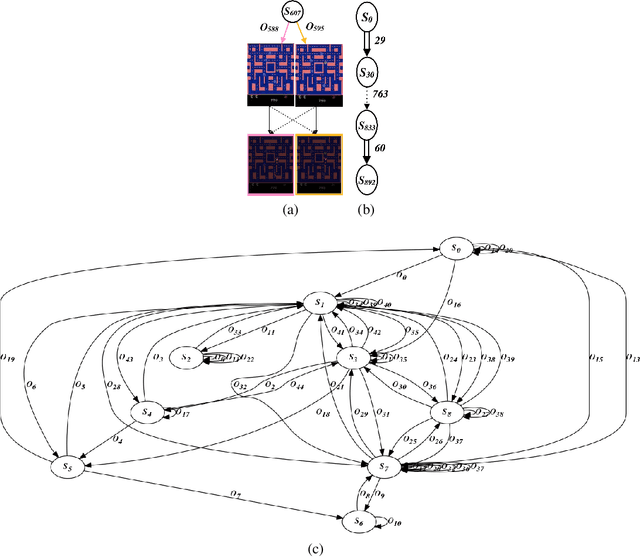
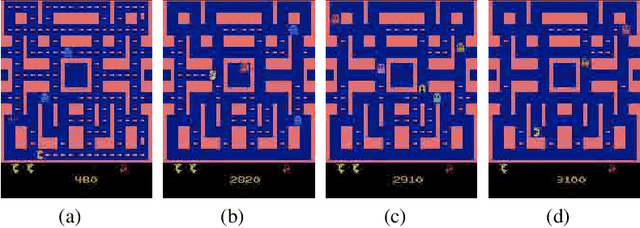
Abstract:We introduce an approach for understanding finite-state machine (FSM) representations of recurrent policy networks. Recent work focused on minimizing FSMs to gain high-level insight, however, minimization can obscure a deeper understanding by merging states that are semantically distinct. Conversely, our approach starts with an unminimized machine and applies more-interpretable reductions that preserve the key decision points of the policy. We also contribute a saliency tool to attain a deeper understanding of the role of observations in the decisions. Our case studies on policies from 7 Atari games and 3 control benchmarks demonstrate that the approach can reveal insights that have not been noticed in prior work.
Sleep Stage Scoring Using Joint Frequency-Temporal and Unsupervised Features
Apr 10, 2020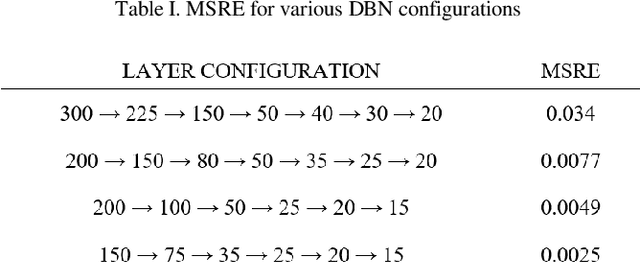

Abstract:Patients with sleep disorders can better manage their lifestyle if they know about their special situations. Detection of such sleep disorders is usually possible by analyzing a number of vital signals that have been collected from the patients. To simplify this task, a number of Automatic Sleep Stage Recognition (ASSR) methods have been proposed. Most of these methods use temporal-frequency features that have been extracted from the vital signals. However, due to the non-stationary nature of sleep signals, such schemes are not leading an acceptable accuracy. Recently, some ASSR methods have been proposed which use deep neural networks for unsupervised feature extraction. In this paper, we proposed to combine the two ideas and use both temporal-frequency and unsupervised features at the same time. To augment the time resolution, each standard epoch is segmented into 5 sub-epochs. Additionally, to enhance the accuracy, we employ three classifiers with different properties and then use an ensemble method as the ultimate classifier. The simulation results show that the proposed method enhances the accuracy of conventional ASSR methods.
Visualizing Deep Networks by Optimizing with Integrated Gradients
May 02, 2019



Abstract:Understanding and interpreting the decisions made by deep learning models is valuable in many domains. In computer vision, computing heatmaps from a deep network is a popular approach for visualizing and understanding deep networks. However, heatmaps that do not correlate with the network may mislead human, hence the performance of heatmaps in providing a faithful explanation to the underlying deep network is crucial. In this paper, we propose I-GOS, which optimizes for a heatmap so that the classification scores on the masked image would maximally decrease. The main novelty of the approach is to compute descent directions based on the integrated gradients instead of the normal gradient, which avoids local optima and speeds up convergence. Compared with previous approaches, our method can flexibly compute heatmaps at any resolution for different user needs. Extensive experiments on several benchmark datasets show that the heatmaps produced by our approach are more correlated with the decision of the underlying deep network, in comparison with other state-of-the-art approaches.
Embedding Deep Networks into Visual Explanations
Apr 11, 2018
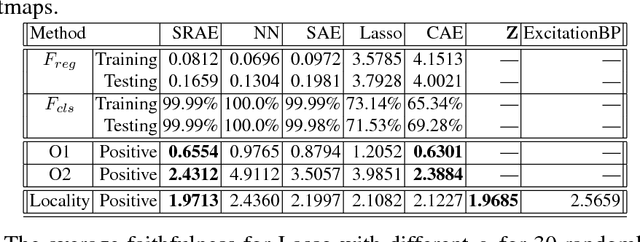


Abstract:In this paper, we propose a novel explanation module to explain the predictions made by a deep network. The explanation module works by embedding a high-dimensional deep network layer nonlinearly into a low-dimensional explanation space while retaining faithfulness, so that the original deep learning predictions can be constructed from the few concepts extracted by the explanation module. We then visualize such concepts for human to learn about the high-level concepts that deep learning is using to make decisions. We propose an algorithm called Sparse Reconstruction Autoencoder (SRAE) for learning the embedding to the explanation space. SRAE aims to reconstruct part of the original feature space while retaining faithfulness. A pull-away term is applied to SRAE to make the explanation space more orthogonal. A visualization system is then introduced for human understanding of the features in the explanation space. The proposed method is applied to explain CNN models in image classification tasks, and several novel metrics are introduced to evaluate the performance of explanations quantitatively without human involvement. Experiments show that the proposed approach generates interesting explanations of the mechanisms CNN use for making predictions.
 Add to Chrome
Add to Chrome Add to Firefox
Add to Firefox Add to Edge
Add to Edge